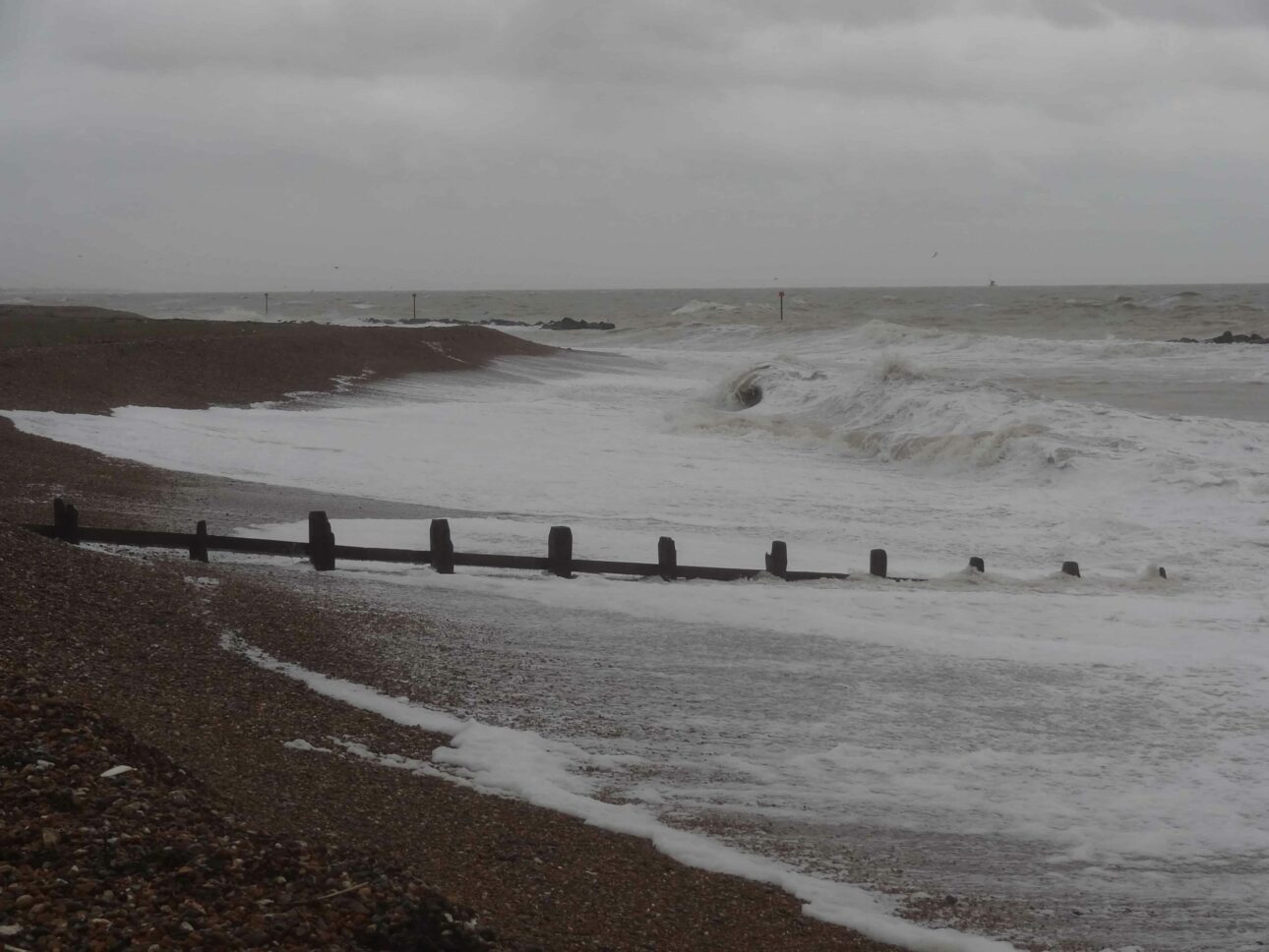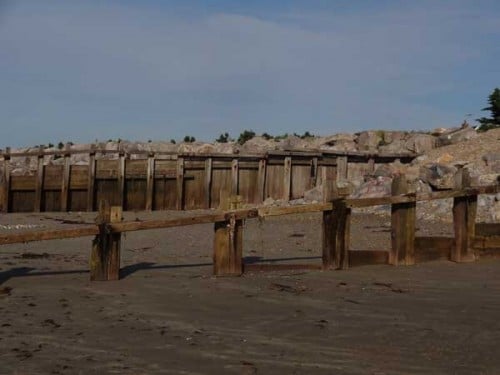Groynes on UK beaches are one of our coast’s most beautiful and valuable features.
Wooden groynes are an essential control to keep beaches stable. Although groynes can be made of many materials, the UK’s wooden groynes do the job and add character to the environment.
The purpose of a groyne is to stop sand and pebble movement along a stretch of coast. It does this by trapping beach material, which helps build up a more extensive section of beach in front of an area experiencing coastal erosion. They can often radically change a coastline, and care must be taken and changes monitored. If you stop movement on one stretch of the beach, then yes, you build up one area but can starve another.

Although rock groynes last the longest, at Coast Radar, we like the character of hardwood groynes. Due to their very nature, groynes get bashing all year round, which leads to some beautiful smooth wood with rusty metal brackets.


As well as helping keep the coastline in shape, groynes protect the beachgoer. We all know that a typical trip to any British beach can be windy, and the groyne can be the saviour in providing that natural windbreak and extending the time available to sit and enjoy the beach. They also provide a great source for beachcombers as they trap shells and other interesting objects.
Groynes are positioned to trap beach material and are most effective on shingle or gravel beaches, which is why the Sussex and Kent coastline has an abundance of groynes.

These pictures were taken on the West Sussex stretch between Littlehampton West beach and Middleton-on-Sea beach.
